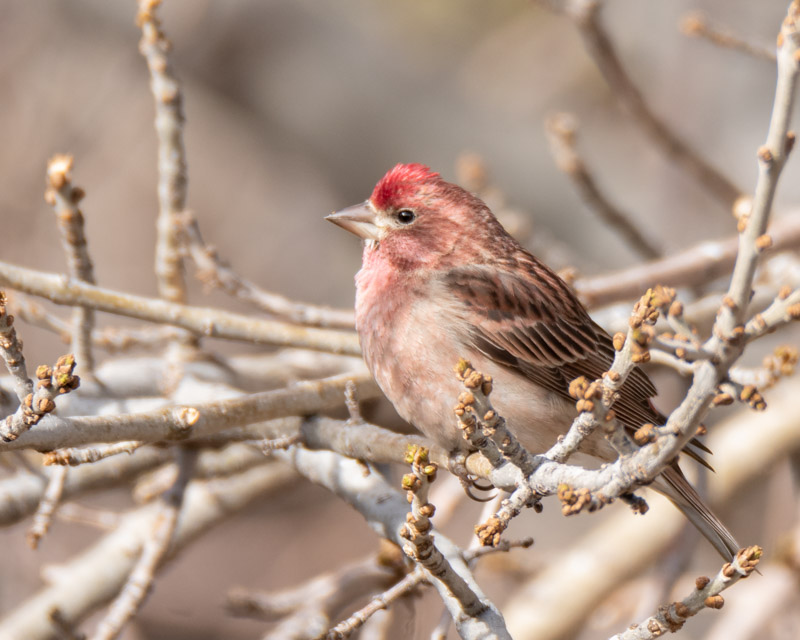By Dan Weisz
I recently spent a morning in Madera Canyon which included perhaps a half hour at the Santa Rita Lodge. Located at 5000 feet elevation among oak and juniper woodlands in the Santa Rita Mountains, the Lodge keeps a number of bird feeders well stocked. There are benches for visitors to sit on while enjoying the wildlife attracted to the area. The birds below are typical of those you’ll see at that elevation in any of the Sky Islands of southern Arizona including our Catalina Mountains. Among the birds were many “plain old” House Finches. This species was a southwestern resident that was introduced to New York in the 1940’s as a cage bird due to its red colors. When the sales didn’t catch on, they were released on Long Island. They quickly started breeding and have spread across almost all of the eastern United States.
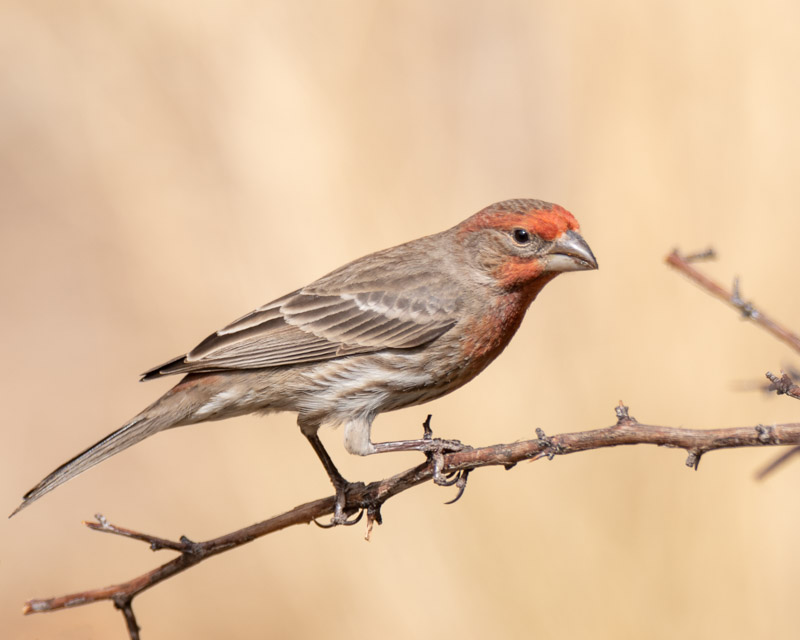
The red of a male House Finch comes from pigments contained in its food eaten during molt (when it grows in new feathers). So the more pigment in the food, the redder the male. If you compare the colors on the male in the photo above to the one in the photo below, you will see a striking difference. Male House Finches will have a red face and upper breast along with a streaky brown back and belly.
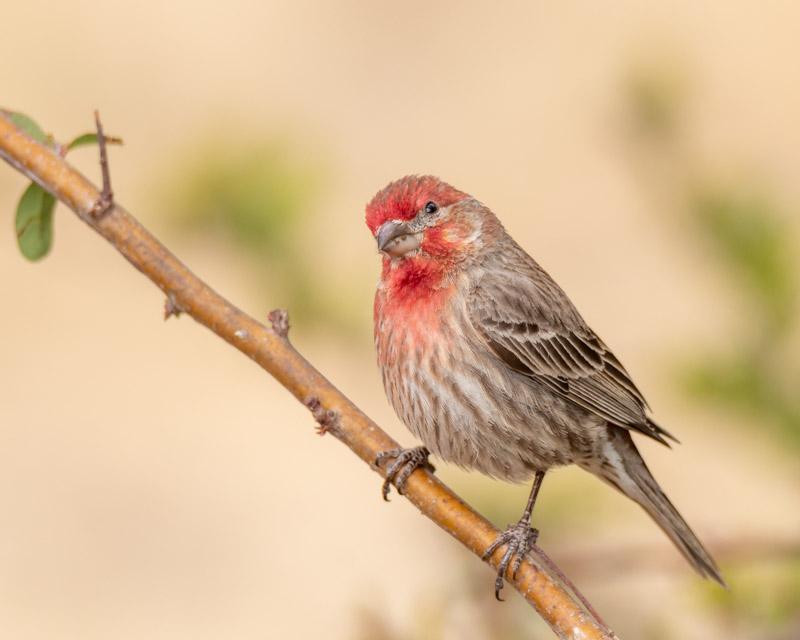
A nice find for me was several Cassin’s Finches. These finches (see below) also have red but they have a bright, peaked crown on their head to go along with a light pink throat and breast. There is little to no streaking on their breasts. There is also a rosy wash on the brown, streaked backs. Even though the temperatures were cool with snow having fallen twice in the week prior, the trees were beginning to leaf out.
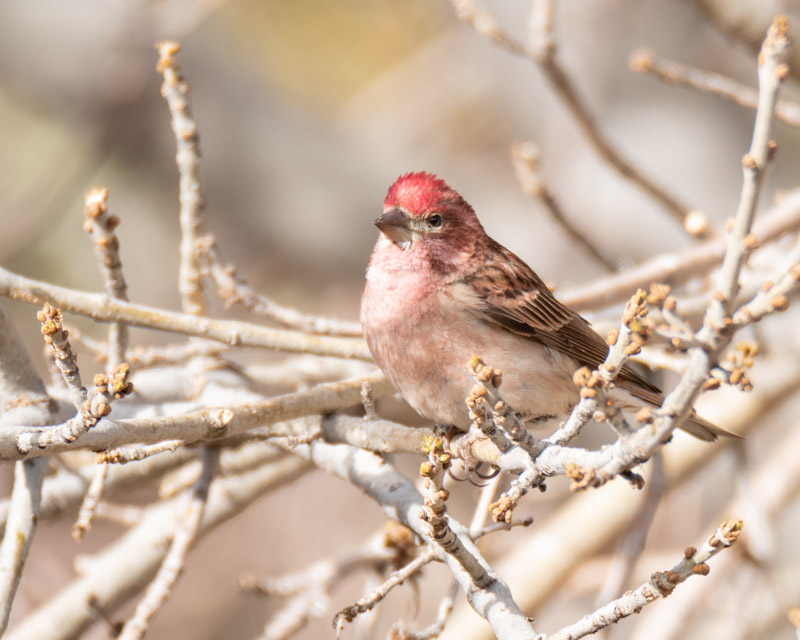
There are always hummingbirds year-round at the Santa Rita Lodge. Here, a Broad-billed Hummingbird paused for a short rest. (Broad-bills are a regular in the Foothills during the summer)
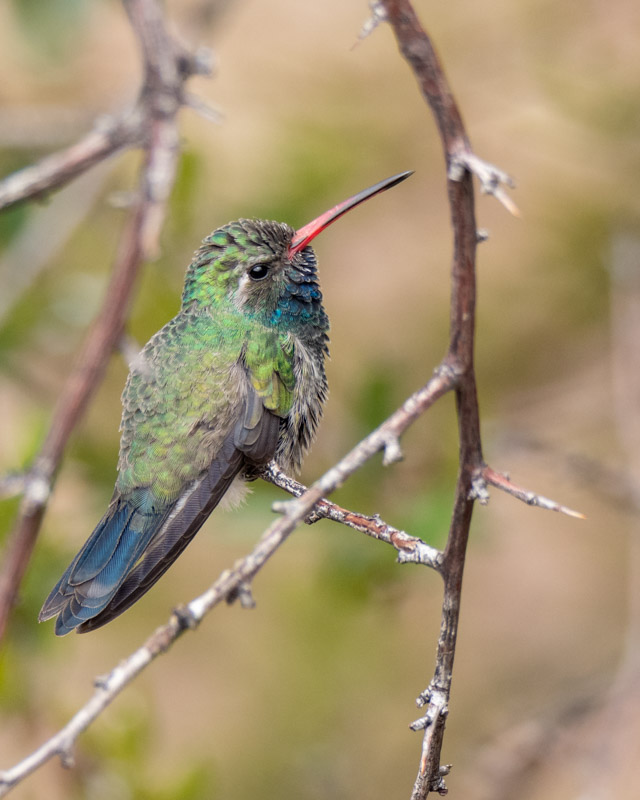
There were many juncos to be seen. Most were Dark-eyed Juncos. These Juncos are one of the common birds of North America preferring wooded areas with good ground cover. There is a great variety among Juncos. The one below is (I believe) a Pink-sided Junco with its gray head, brown back, and pinkish/brown sides.
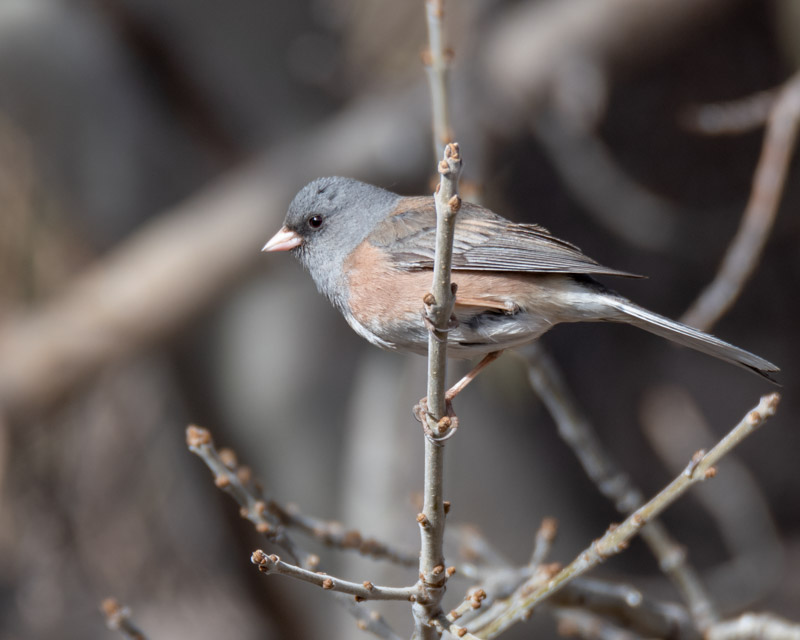
Here is another junco, set against a lighter background. (During winter, we’ll have juncos in the Foothills andTucson area)
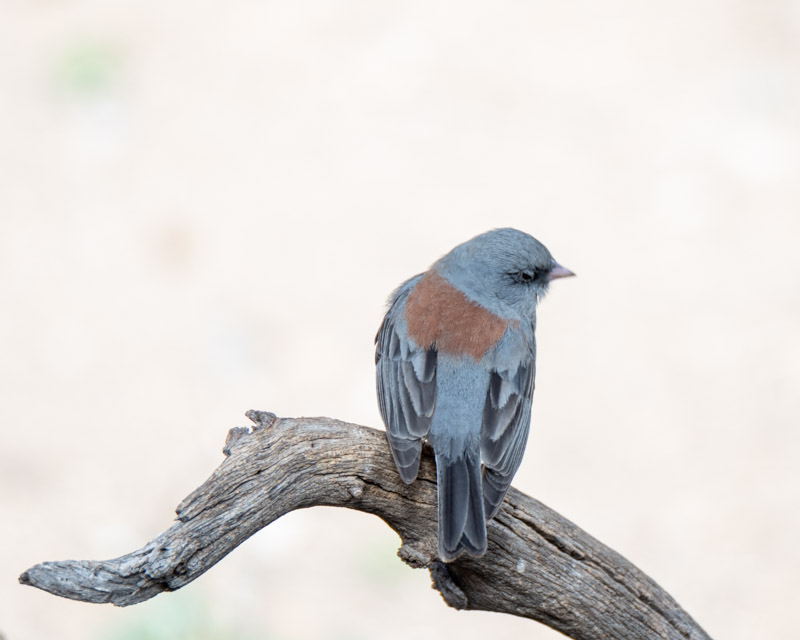
The area at the Santa Rita Lodge is indeed a “wildlife” area.
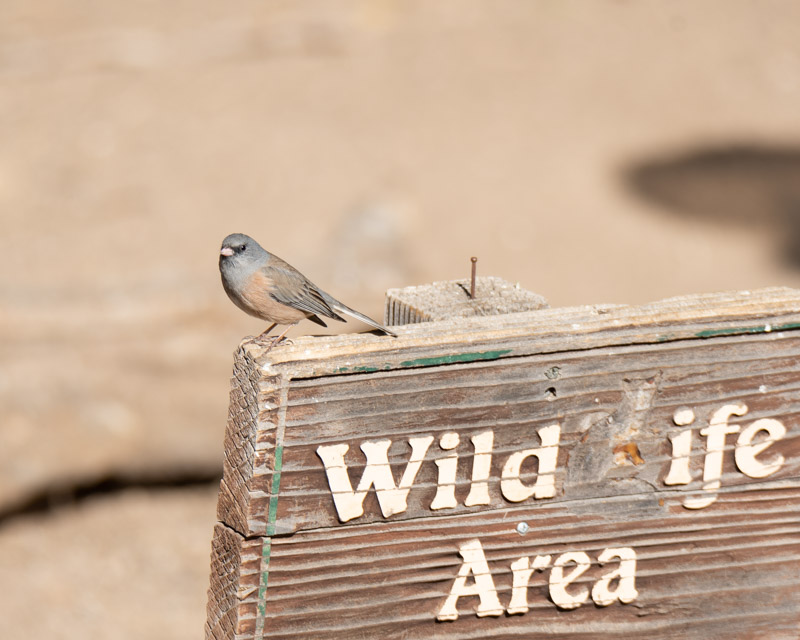
The Yellow-eyed Junco has a yellow eye!! Unlike the Dark-eyed Junco, this bird is only found in the US in the Sky Islands. It is a bird of the mountain forests of Mexico and Guatemala. To hear a fascinating story about Dark-eyed and Yellow-eyed Juncos, listen to Birdnote: https://www.birdnote.org/listen/shows/yellow-eyed-juncos-bright-eyes
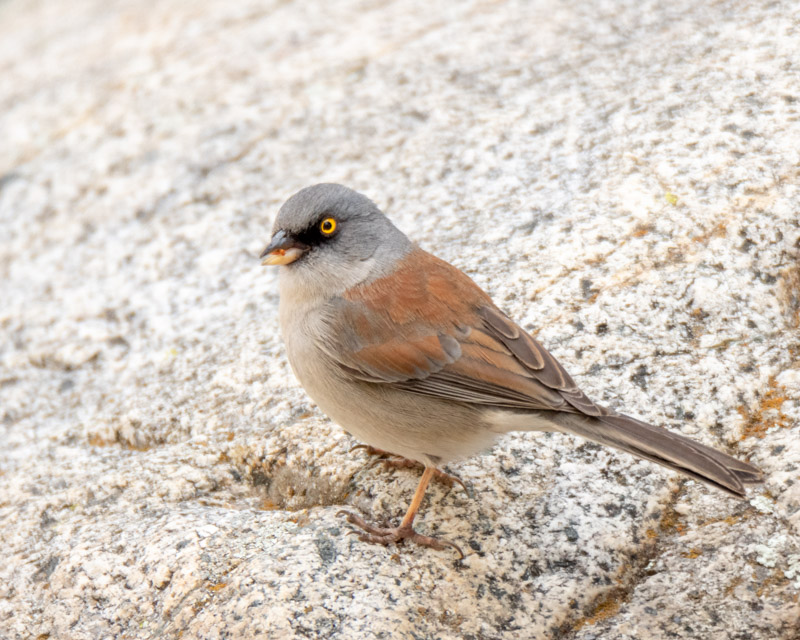
A very surprising find in Madera Canyon was located along the creek behind the lodge. We walked the short trail for a bit and came across a flowering apricot tree. This tree was probably planted by settlers or miners in cabins along the creek in the late 1800’s or early 1900’s. I am sure that the birds, bears, coati and other creatures enjoy the fruits well before they ripen.
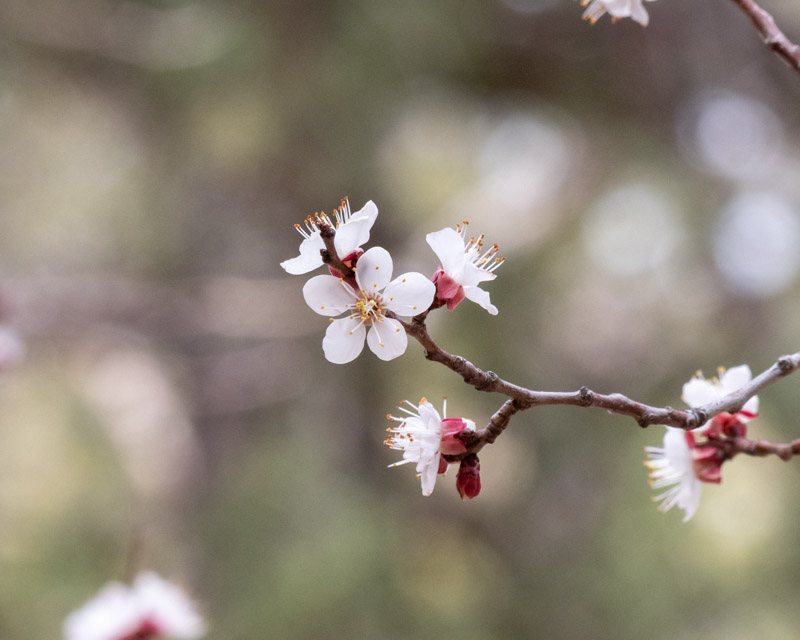
Back at the lodge, another Broad-billed Hummingbird sat briefly between feedings. This bird isn’t plump, it’s just the angle of the photograph and how he is sitting that gives that impression. This hummingbird weighs a little bit more than a penny, so he is trim and fit.
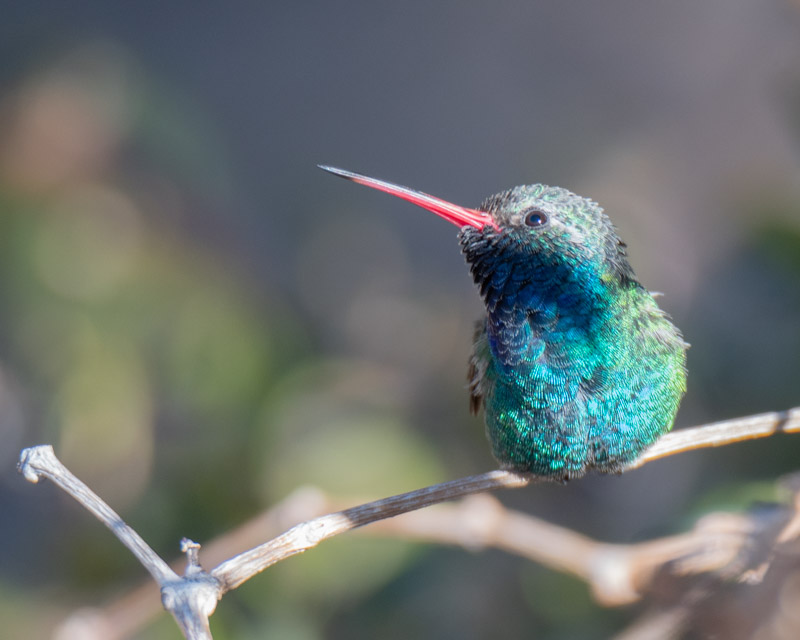
Bridled Titmouse are small birds similar to chickadees. The head pattern along with the short, pointy crest and small beak give this bird a distinctive look.
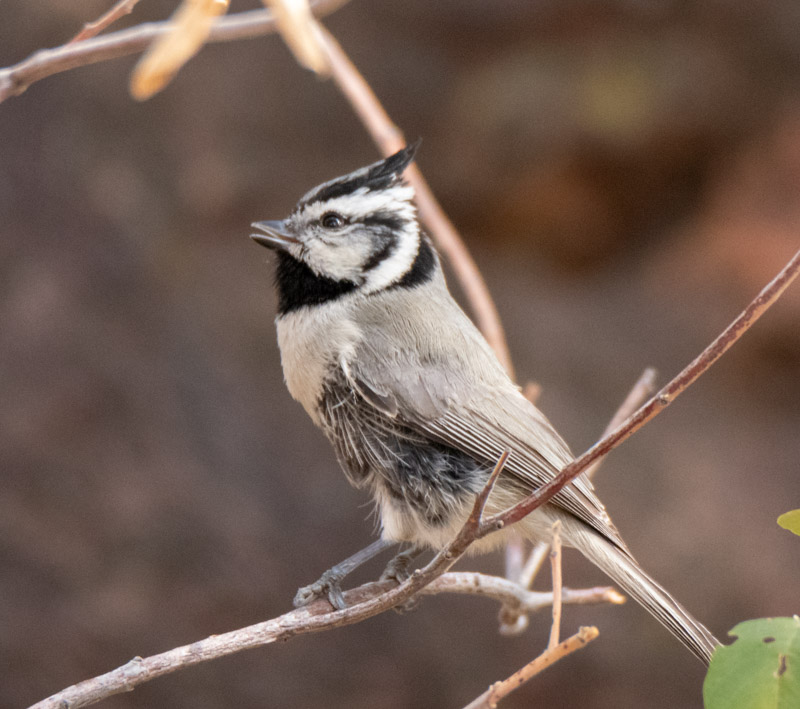
The Bridled Titmouse is yet another bird that, in the United States, is only found in the mountains of southern Arizona (see the range map below).
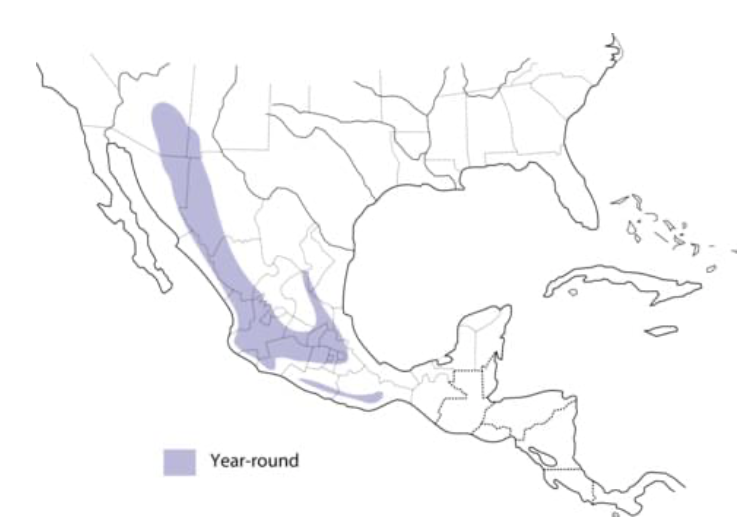
Here is another good look at a very handsome Broad-billed Hummingbird!
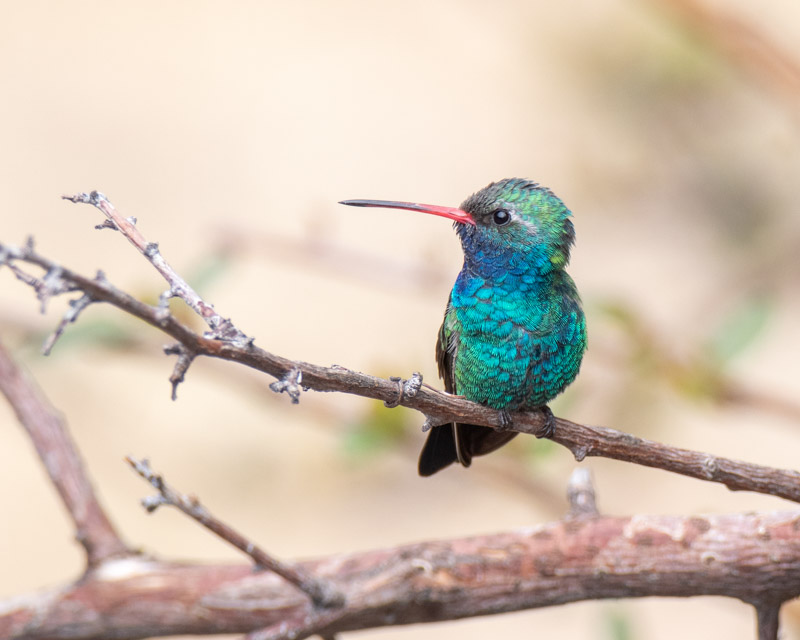
And one last look at the male House Finch.
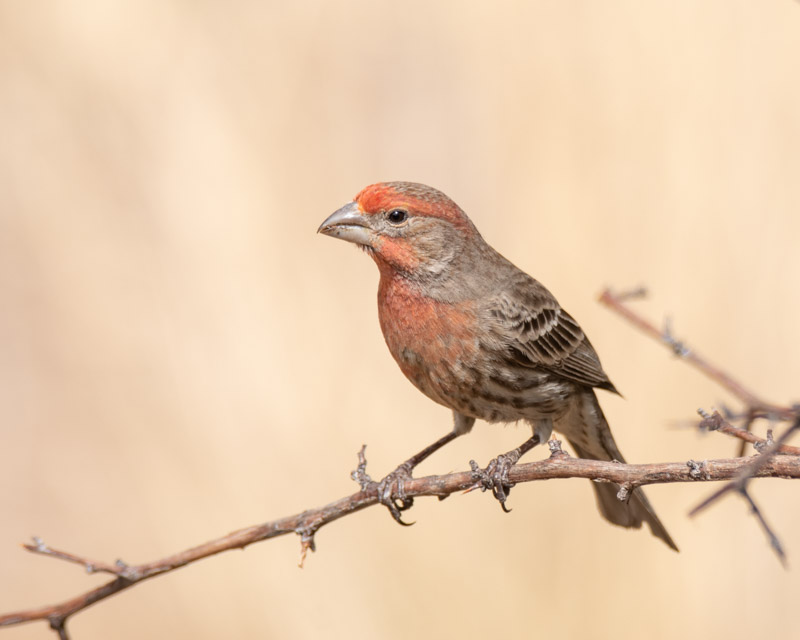
And compare the House Finch above with the Cassin’s Finch below. Can you spot the differences?
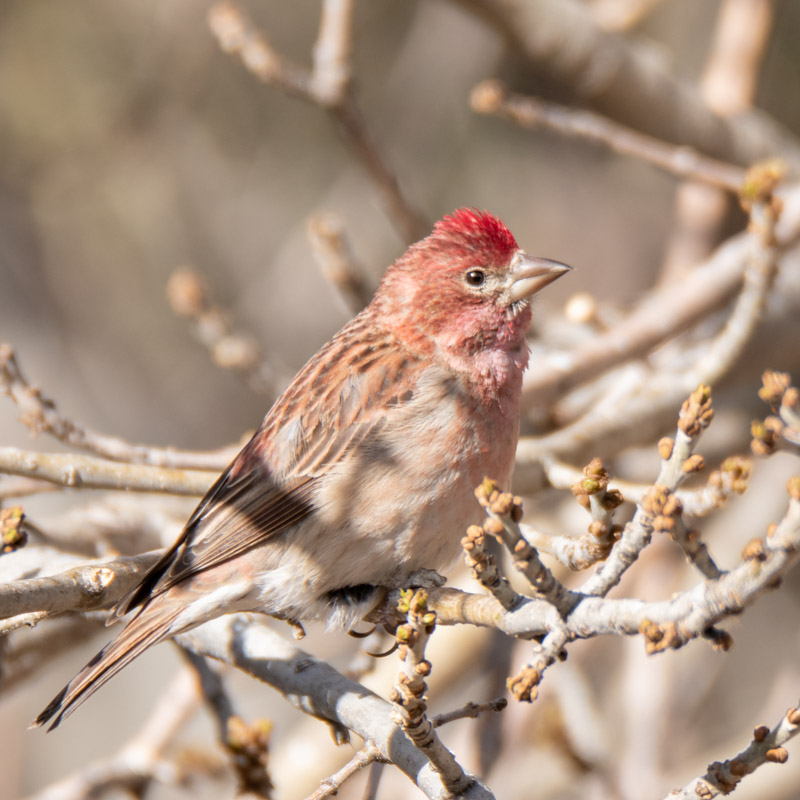
The Cassin’s Finch is named after John Cassin, the long-time Curator of Ornithology at the Academy of Natural Sciences in Philadelphia in the mid-1800’s. He described 198 species of birds worldwide and five species of birds in North America are named after him. Cassin died of arsenic poisoning caused by his handling of bird skins preserved with arsenic.
